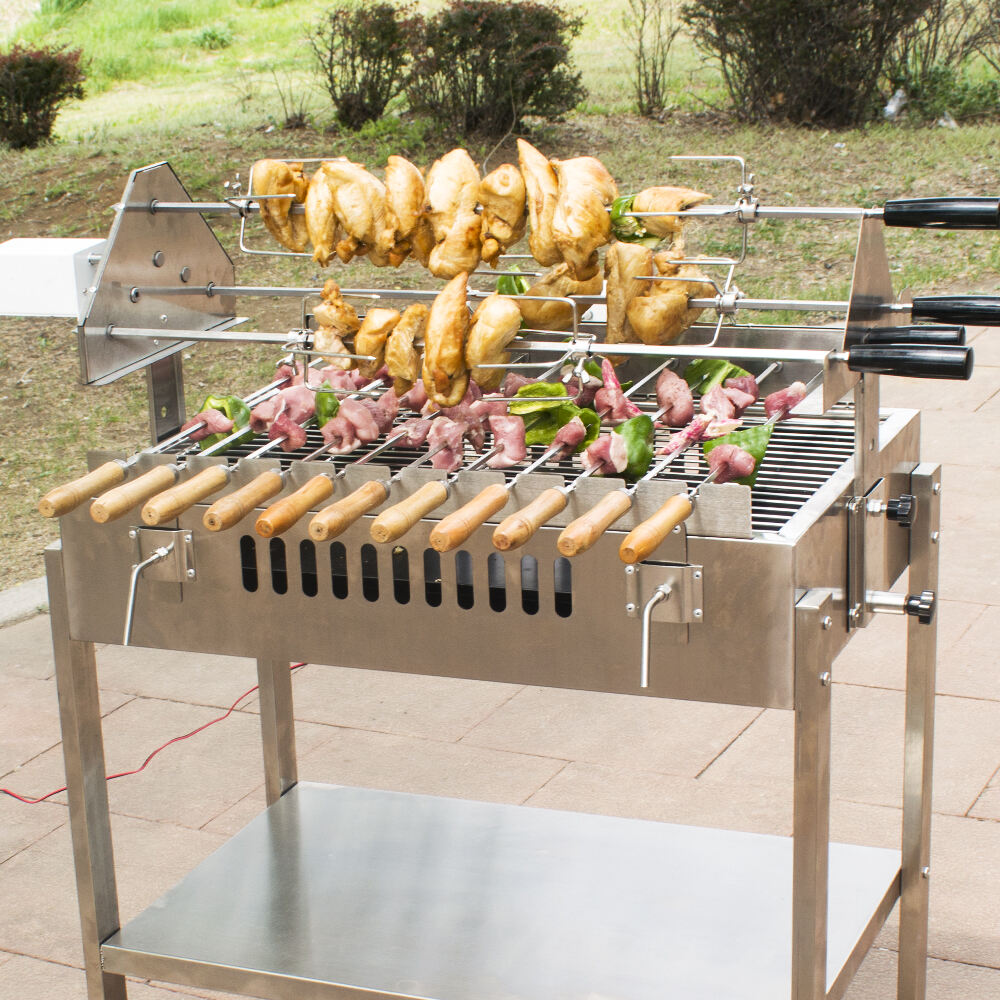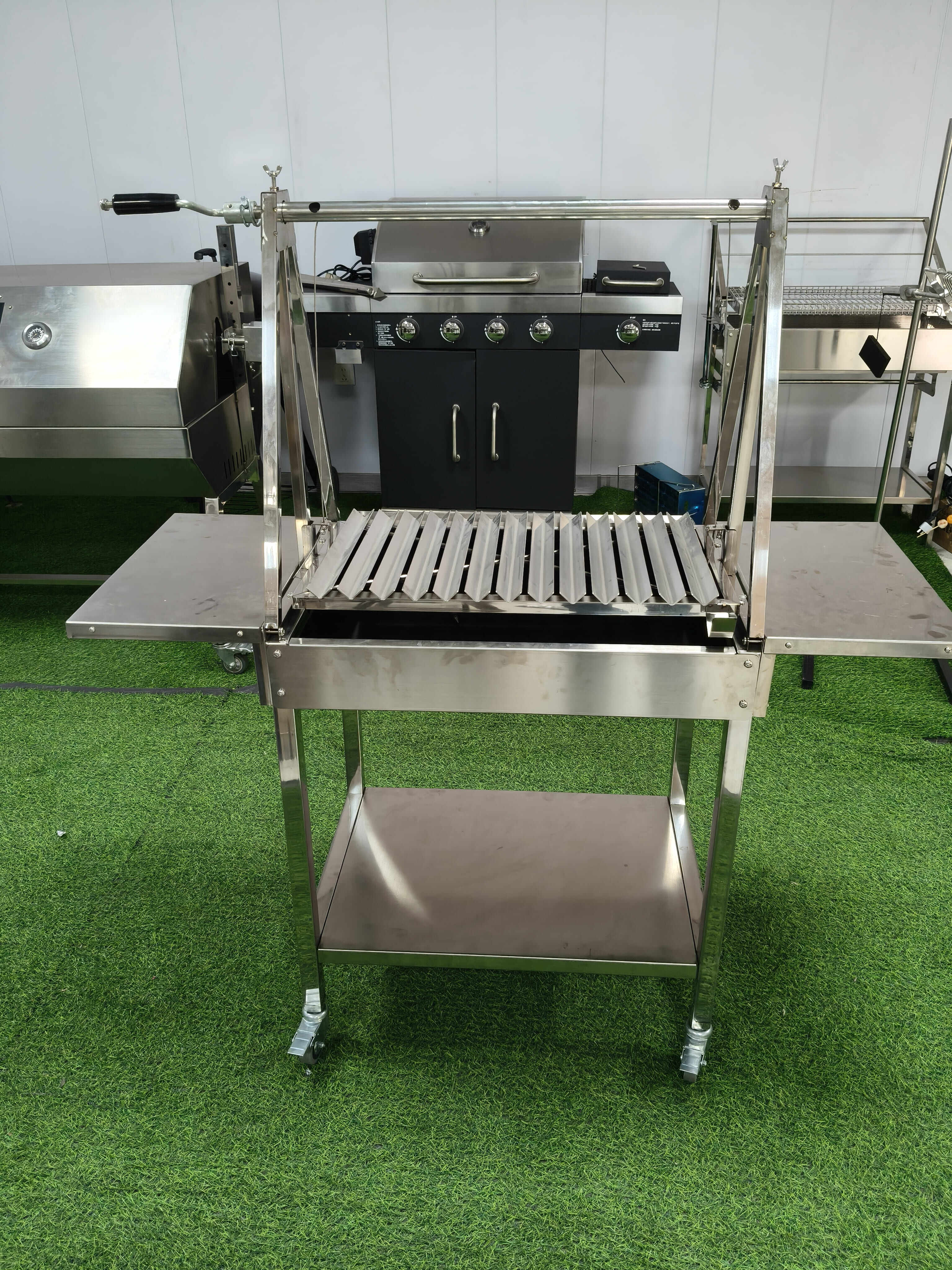Choosing the Right Cut for Authentic Churrasco
Why Picanha is the Gold Standard
I have always had a kind of reverence for picanha in Brazilian BBQ culture for delicious reason. Top Rump (cap-off) This cap-off cut from the top of the rump has a great fat cover, which helps the meat stay moist and tender, and adds flavour when it comes in contact with the heat of the grill making it an essential for a true Churrasco. Culturally, it holds great importance, and in Brazil, Picanha can often be found at the heart of a traditional barbecue, affirming the nation’s heritage and the skilful methods associated with Brazilian barbecue. Veteran BBQ chefs swear by the proper cut of Picanha to provide juicy and full-flavoured dishes, and the trend shows no sign of slowing down. When we look at Brazilian churrascarias, we see picanha as the heart of traditional barbecue. And because of its distinct qualities and cultural significance, you won't want to spin out an authentic Brazilian barbecued meal without it.
Skirt Steak vs Flank: Balancing Tradition and Accessibility
It’s budget friendly with its bold flavor, so this is really the cut of choice if you’re wanting those authentic Brazilian BBQ flavors without spending a fortune. Skirt This cut is generally more inexpensive, however, don’t be deceived it doesn’t come short in flavor and it will certainly be a hit for the grill lover. A flank steak, which is generally tougher, can be a tender and delicious one if you marinate it. In comparing the two, both cuts can be used interchangeably in Churrasco, which translates to Churrasco at home can be but tradition meets accessibility. Skirt steak is the classic choice outside of regions with plenty of options for high quality meat, thus similar to regionalised practices in Brazilian barbecue. A combination of tradition and accessibility that further expands the possibilities for culinary discovery on a brazilian grilling.
Alternative Cuts for Regional Variations
Leonora’s curiosity for uncommon cuts such as Tri-tip or Brisket looks into regional interpretations of Churrasco, celebrating the differences in local gastronomy. While these are somewhat non-traditional cuts, they can be absolutely amazing when done right, and provide a new twist on your usual Brazilian BBQ menu. Grillmasters have commented that these alternative cuts are just as capable of capturing the essence of Churrasco, and in many cases, adding new dimensions to your barbecue beyond taste and texture. Regional traits in choice of cuts paint a colorful tapestry of flavors that varied customs can contribute. Including alternative meats in the BBQ lineup not only adds variety to the grilling ritual, but pays homage to the many ways Brazilian BBQ can look.
Mastering Churrasco Seasoning Techniques
The Art of Minimalist Salting
Taino-style minimal salting is and essential Churrasco technique that uses kosher salt to bring out the beef’s flavor without disrupting its integrity. Simple seasoning is often described by famous chefs, who say it allows the particular meat cut to shine. This method is supported by science, which suggests that proper salting increases the flavor of the meat, especially during the resting period after grilling. Bring out the rich flavor of the Churrasco by salting and the moisture and integrity of the beef is preserved, allowing the cut to remain dense and true to the beef taste.
When to Apply Coarse Salt for Maximum Flavor
The perfect amount of seasoning to a chef is SEASONED TO TASTE Timing is everything when adding finishing salts to meat for maximum flavor. Whether you do so too soon and pull out moisture, possibly drying the meat, or save it for right before grilling in order to trap flavors effectively, however, is up to you. Studies on food science have determined that the best time for salting meat is from 40 minutes prior to cooking up to just before grilling or the absorption of the greatest amount of flavour. More experienced grillers will want to play with the timing of the salting until they’ve nailed the flavor of the meat to their preference. A balance distribution of salt will contribute to an even flavour of every piece of meat, enhancing the Churrasco experience for all your guests.
Marinade Options for Enhanced Depth
Nothing is better than having Churrasco deliciously flavoured by marinades to further increase the level of satisfaction. Acid, like lime juice or vinegar, helps to break down the meat and infuses it with pops of flavor. I've read different culinary tests and hear from various experts that marinades do work, they are worth the effort, they make beef more flavorful, they contribute flavor and a depth to grilled beef that matches the beef. Discovering the ingredients of a traditional Brazilian marinade—such native spices and herbs—is a means to pay tribute to historic eating customs and preserving diversity of regional tastes within a Churrasco experience.
Charcoal Grill Setup for Traditional Churrasco
Building the Perfect Charcoal Fire
Getting a good charcoal fire is key for traditional Churrasco grilling. Some grilling experts suggest investing in high-quality lump charcoal, which heats up fast and burns hot for making grilled meats. The pyramid serves as a chimney to enable perfect air circulation to the coals for stoke up quickly and hot, The pyramid shape ensures a better air flow through the charcoal, which keeps the briquettes hotter. Consistency in temperature is important as it also translates to consistency in cooking times and your meat's doneness level, resulting in the perfect end product. I can continuously check on the fire to tweak it and make sure I'm getting the meat to my personal level of char and taste.
Skewering Methods for Even Cooking
Skewering and Vertical Grilling is a staple of the Churrasco Grilling tradition for even cooking and heating. The question of metal vs wood is brought up with whether or not you should use wooden skewers vs metal skewers, and which ones are the best. The right spacing between chunks of meat is the key for even cooking and the meat not drying up on the grill. Tips #1 – #6 Eating like a true Brazilian is fun and easy when you know how to cook and serve food using skewers in the traditional way for more flavor and a tastier meal each time every time.
Optimal Heat Zones for Slow Grilling
I find that it is absolutely essential to maintain properly balanced heat zones when slow grilling, especially when working with large pieces of meat. Many grilling experts recommend a two-zone approach, with one side hot for searing and the other cooler to allow for slow roasting. This method of testing dishes controls cooking and preserves the tenderness of meats. Knowing the science behind heat zones is the key to perfect meat and less risk of overcooking when grilling. Veteran grill masters share the benefits of patience when grilling Kenji proves that a little patience goes a long way with Churrasco.
Grilling Techniques from Brazilian Churrascarias
The Importance of Constant Rotation
Rotating the meat on the grill is key to even cooking and an even char. This method keeps one side from being overcooked and makes sure the meat is cooked evenly. Lovers of serious grilling will tell you that keeping even temperature with rotation is the key to getting the right degree of doneness. Regular turning of the meat while grilling will increase flavor and tenderness, as contrasted with the alternative (less research supportive) story in which uneven heat exposure helps grill meat to taste good. Watching a variety of Churrascaria ritual however it becomes evident that constant checking and turning is very much part of the mix in successful grilling.

Identifying Doneness Without Thermometers
Being a grill ninja also means knowing how to guesstimate doneness of meat with the right amount of touch and visual cues. The approach enables grillers to act quickly as meat is cooking, depending on its firmness, juices and color rather than thermometers. The type of intuition that comes along with experience seems to become one of the most important lessons. In different parts of Brazil, the preference for doneness of meat can vary, and comparing what you know to be your style to these styles can give you a unique perspective on how to grill better.
Managing Flare-Ups and Smoke Control
Controlling flare-ups - caused by a buildup of fat dripping onto the flames - is essential for a successful grilling experience. Strategically placing meat on the grill and moving it around to avoid char, or allowing it to cook off direct heat, can help minimize charring, and keeping the cooking experience enjoyable. Those who know how to grill advise that you control airflow so the smoke can get out and give flavor, but not over-smoke. Optimizing the smoke and heat dynamics is the key to perfection when it comes to barbecue, traditions similar to much of Brazilian grilling which is about getting more harmony.
Authentic Chimichurri Sauce Preparation
Balancing Acidity and Herbs
I read that the perfect chimichurri sauce is a balancing act between acidity (vinegar) and freshness (herbs). This fine balance of flavors is crucial to pavement those grilled meats (or anything) as we did in a typical Churrasco dinner. Professional chefs highlight the importance of this balance, noting that introducing the garlic can add depth to the flavor profile by balancing the acidity. Research into flavor profiles supports this concept, demonstrating that each ingredient contributes to a central feature of the overall mid-taste characteristics. There are personal and regional preferences that turn classic recipes into something new, so there are many versions of this ever-popular sauce.
Regional Variations in Sauce Recipes
Chimichurri can be diversified with local or regional variations to cheesy and garlicky, buttery and basily or be put on display as a simple, and fresh zippy verde. For example, it's flavor profile can be changed by adding red pepper flakes or different herbs, so that it can be personalized for various grilling situations. Chimichurri can become almost something new by the addition of local ingredients, expert sources explain, describing how the condiment evolves yet remains faithful to it origins. By learning about these variations, a Grillmaster can elevate your barbecue experience by providing rich and flavorful taste choices that are right for you.
Make-Ahead Tips for Optimal Flavor
When you make your chimichurri sauce a day or so ahead of time, the flavors will bloom and work some magic on whatever grilled meats you pour it on. If possible, allow the sauce to chill for several hours or overnight to allow the flavors to develop fully. Learning the chemistry of how ingredients come together with time can dramatically enhance the quality of your prepared Chimichurri. Handy tips from experienced grill masters suggest storing the sauce the right way to keep the great taste in check until it's time to bring it to the table and provide you with a tasty addition to any cooked meat.
FAQ
What is Picanha and why is it important in Churrasco?
Picanha is a beef cut from the top of the rump known for its tenderness and rich flavor, often regarded as essential for authentic Brazilian Churrasco.
Can skirt steak and flank steak be used interchangeably?
Yes, both skirt steak and flank steak can be substituted in Churrasco recipes, as they offer similar flavors and can be tenderized through marination.
How do I balance acidity in chimichurri sauce?
To balance acidity in chimichurri sauce, integrate acidic components like vinegar evenly with fresh herbs to enhance flavor without overpowering the dish.

